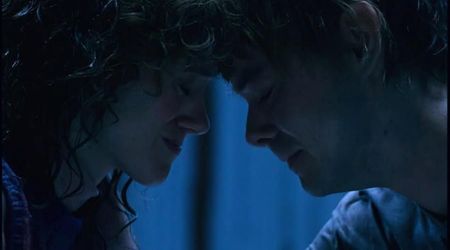'Unexplained & Unexplored': Will the legend of a ghost ship in the middle of the California desert finally be decoded?

For those of you who love a good mystery and logic to back it up, 'Unexplained and Unexplored's will have you theorizing for ages.
In the premiere episode airing this week, explorers Justin Fornal and Emiliano Ruprah use historical maps as well as modern imaging techniques to find out what happened to a fabled pirate ship lost in the California desert.
The story begins in the year 1587. It is believed that an English ship called The Content took a plunge off the coast of Baja, California, into the Cortez sea aka The Gulf of California — the home of the indigenous Kumeyaay tribe. Remember the name of the tribe, it's important for later.
The Content was loaded with 4 million dollars in stolen gold but it is believed that the ship ended up in the desert never to be found again. So how did a ship that went to the sea end up marooned in the vast Califonia desert?

Some believe it was a Spanish ship while some say it belonged to the Vikings. It is a pretty bonkers story, after all. A ship loaded with gold just sitting there in the middle of the desert waiting to be found.
Sighting by Myrtle Botts
In 1933, a local woman named Myrtle Botts was traveling with her husband at the Anza-Borrego State Park, in the Colorado Desert of inland southern California. She met a man who was searching for a supposed Viking ship, whose remains he had seen protruding out of the sand.
It had shields on each side and he told Botts how to find it. That note is preserved at the Julian Pioneer Museum in Julian, California.
Then, Botts set out to look for the ship and is said to have found it. But, an earthquake hit and the wall of the gully and whatever the man may have seen was buried inside the rubble. The directions were lost.
Lost at sea
Now there are quite a few theories around this, but the show explores the most possible one. The ship could have gone into the sea, not knowing that it would end up reaching a no exit zone.
The maps back in the day did, after all, believe that California was an island. It was first mentioned as a legend in 1510 as the "Island of California" in a Spanish novel called Las sergas de Esplandián by Garci Rodríguez de Montalvo.
It's pretty possible that this story may have led them to misidentify the Baja Califonia peninsula as an island. After digging through the collection of old-timey maps that the explorers have, they figure that they need to talk to an expert on this particular ship.
They reach out to Dr. Tim Krantz, an acclaimed geologist. He tells them something that confirms their suspicions — it may have not been an island, but the spot where the ship may have met its final resting place was actually covered in water.
In 1587, the ship's last known sighting — the 60-mile radius in the now California desert was actually filled with more than 200 feet of water — enough for the ship to sail into. But, the tributaries could have been blocked by sediments not letting the ship escape.
But, there's no evidence of a ship ever being seen there — so how do they find it? With the help of the Kumeyaay Petroglyphs.
The Kumeyaay Petroglyphs
The Native American tribe, that lived in the area at the time documented Kodak moments on rocks, etching them as drawings and paintings.
The team is joined by local explorer Robert Marcos in the search, who points them in the direction and what they find after walking miles of rugged terrain filled with scorpions and snakes blows their mind.
For the first time in documented history, the team manages to catch a glimpse of what looks like the drawing of a ship in the Petroglyphs surrounded by symbols of human beings. The tribe had seen the ship and it had been an anomaly, leading them to snap a memory of it on the rock.
The search for the ship leads the team to the collection of works of legendary archeologist Morlin Childers at the El Centro Library in California. Equipped with a handwritten topographical map of the area and a handwritten note on the location of the ship — they set out to find the buried treasure.
Don't miss the series premiere of 'Unexplained and Unexplored' on Sunday, Nov. 10 at 10 pm ET only on Science Channel and anytime on Science GO.










